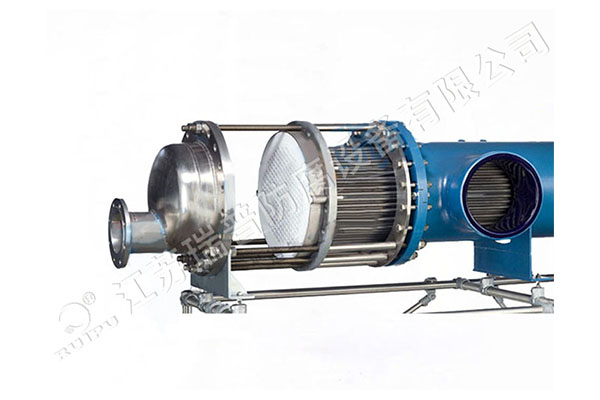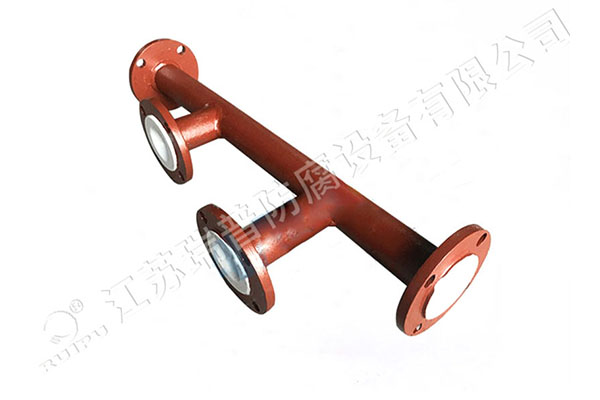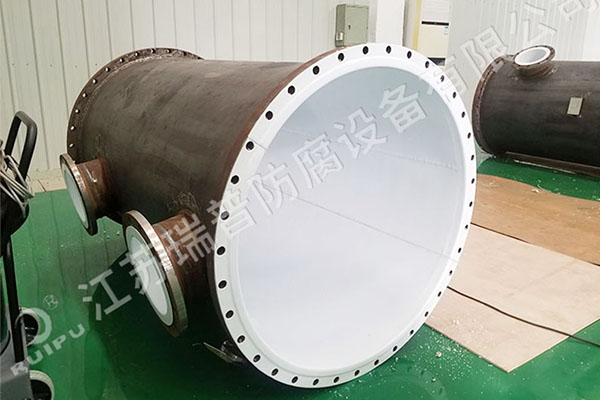What are the significant advantages of PTFE isobaric pipe over traditional metal pipes?
Release Time : 2025-04-27
In the modern industrial field, choosing the right pipe material is essential to ensure the efficient operation of the system. Polytetrafluoroethylene (PTFE), as a high-performance engineering plastic, is widely used in the manufacture of various types of pipes and fittings, including PTFE isobaric pipe.Compared with traditional metal pipes, PTFE isobaric pipe has shown many unique advantages, which not only improve the overall performance of the system, but also reduce maintenance costs. This article will detail the main advantages of PTFE isobaric pipe over traditional metal pipes.
1. Excellent chemical resistance
PTFE is known for its excellent chemical inertness, which means that it hardly reacts with other chemicals. Whether it is strong acids, strong bases or other corrosive media, PTFE can provide excellent resistance. In contrast, metal pipes may suffer from corrosion due to long-term contact with certain chemicals, resulting in leaks or other safety hazards. Therefore, in applications that handle chemicals or require high-purity transmission, PTFE isobaric pipe is undoubtedly a safer choice.
2. Excellent temperature stability
PTFE can maintain its physical properties over a wide temperature range, and can work stably from -200°C to +260°C. This property makes PTFE isobaric pipe very suitable for applications in extreme environments, such as low-temperature refrigeration systems or high-temperature steam delivery systems. Although metal pipes can also withstand higher temperatures, they are prone to thermal stress when the temperature changes sharply, which affects the service life of the pipe.
3. Low friction coefficient
PTFE has a very low friction coefficient, which makes the fluid flow less resistant inside it, helping to improve efficiency and reduce energy consumption. In addition, the low friction coefficient also means that PTFE isobaric pipe is not easy to scale, making it easy to clean and maintain. This is especially important for some industries that require high cleanliness, such as food processing and pharmaceutical industries.
4. Lightweight
Compared with heavy metal pipes, PTFE isobaric pipe is lighter and easier to handle and install. This not only reduces transportation costs, but also simplifies the construction process, especially when working at height or in limited space. At the same time, the lighter deadweight also helps reduce the need for supporting structures, further saving costs.
5. Good electrical insulation performance
Since PTFE is an excellent electrical insulating material, PTFE isobaric pipe is particularly suitable for places where electric current needs to be prevented from passing. This is a very important feature for coolant circulation systems around electrical equipment or any occasion involving electronic components. Metal pipes do not have such electrical insulation properties and may require additional protection measures to avoid the risk of electric shock.
6. Strong anti-aging ability
Over time, many materials will show varying degrees of aging, such as becoming brittle and losing elasticity. However, PTFE has a strong anti-aging ability due to its stable molecular structure. Even if it is exposed to sunlight for a long time or used in an outdoor environment, PTFE isobaric pipe can still maintain good mechanical properties, extend its service life, and reduce the frequency of replacement.
In summary, PTFE isobaric pipe has obvious advantages in many application scenarios due to its excellent chemical resistance, wide operating temperature range, low friction coefficient, lightweight design, excellent electrical insulation performance and strong anti-aging ability. Although the initial investment cost may be higher than traditional metal pipes, in the long run, PTFE isobaric pipe can bring lower operating costs and higher safety, making it an ideal choice for many industrial projects.
1. Excellent chemical resistance
PTFE is known for its excellent chemical inertness, which means that it hardly reacts with other chemicals. Whether it is strong acids, strong bases or other corrosive media, PTFE can provide excellent resistance. In contrast, metal pipes may suffer from corrosion due to long-term contact with certain chemicals, resulting in leaks or other safety hazards. Therefore, in applications that handle chemicals or require high-purity transmission, PTFE isobaric pipe is undoubtedly a safer choice.
2. Excellent temperature stability
PTFE can maintain its physical properties over a wide temperature range, and can work stably from -200°C to +260°C. This property makes PTFE isobaric pipe very suitable for applications in extreme environments, such as low-temperature refrigeration systems or high-temperature steam delivery systems. Although metal pipes can also withstand higher temperatures, they are prone to thermal stress when the temperature changes sharply, which affects the service life of the pipe.
3. Low friction coefficient
PTFE has a very low friction coefficient, which makes the fluid flow less resistant inside it, helping to improve efficiency and reduce energy consumption. In addition, the low friction coefficient also means that PTFE isobaric pipe is not easy to scale, making it easy to clean and maintain. This is especially important for some industries that require high cleanliness, such as food processing and pharmaceutical industries.
4. Lightweight
Compared with heavy metal pipes, PTFE isobaric pipe is lighter and easier to handle and install. This not only reduces transportation costs, but also simplifies the construction process, especially when working at height or in limited space. At the same time, the lighter deadweight also helps reduce the need for supporting structures, further saving costs.
5. Good electrical insulation performance
Since PTFE is an excellent electrical insulating material, PTFE isobaric pipe is particularly suitable for places where electric current needs to be prevented from passing. This is a very important feature for coolant circulation systems around electrical equipment or any occasion involving electronic components. Metal pipes do not have such electrical insulation properties and may require additional protection measures to avoid the risk of electric shock.
6. Strong anti-aging ability
Over time, many materials will show varying degrees of aging, such as becoming brittle and losing elasticity. However, PTFE has a strong anti-aging ability due to its stable molecular structure. Even if it is exposed to sunlight for a long time or used in an outdoor environment, PTFE isobaric pipe can still maintain good mechanical properties, extend its service life, and reduce the frequency of replacement.
In summary, PTFE isobaric pipe has obvious advantages in many application scenarios due to its excellent chemical resistance, wide operating temperature range, low friction coefficient, lightweight design, excellent electrical insulation performance and strong anti-aging ability. Although the initial investment cost may be higher than traditional metal pipes, in the long run, PTFE isobaric pipe can bring lower operating costs and higher safety, making it an ideal choice for many industrial projects.







